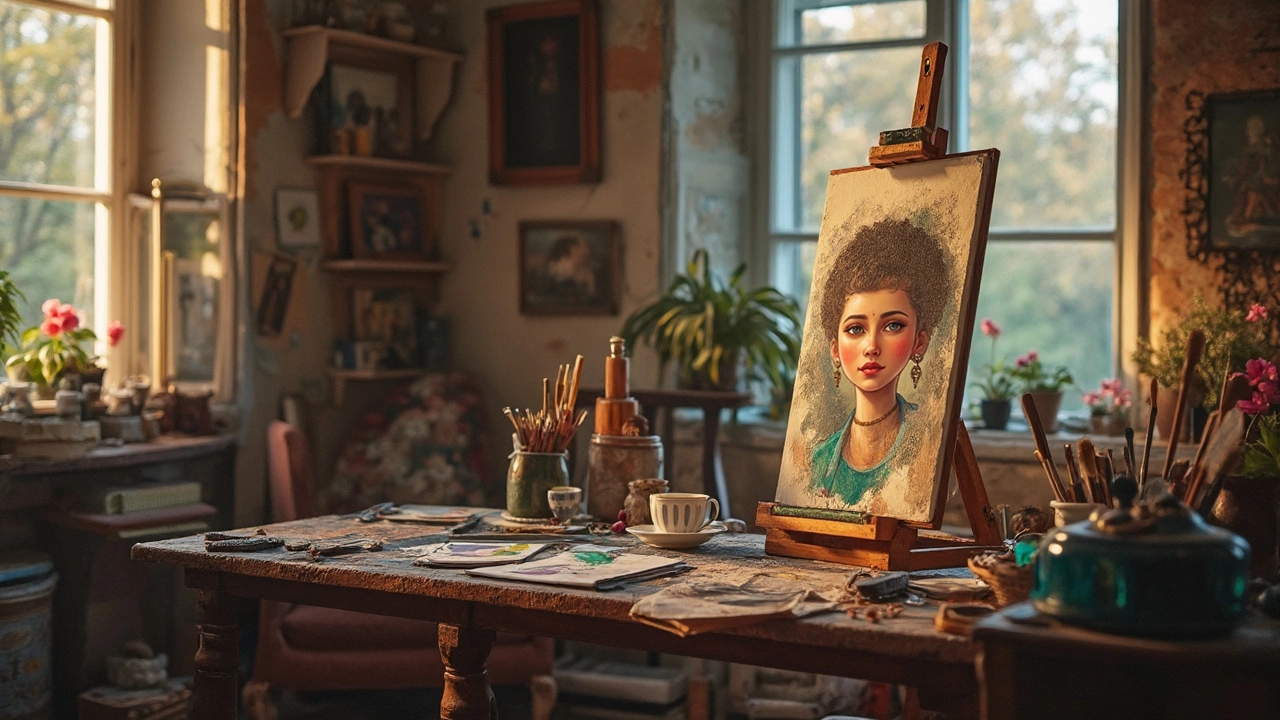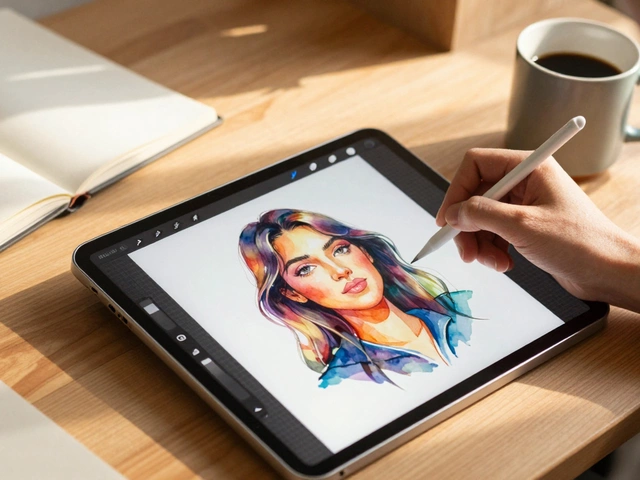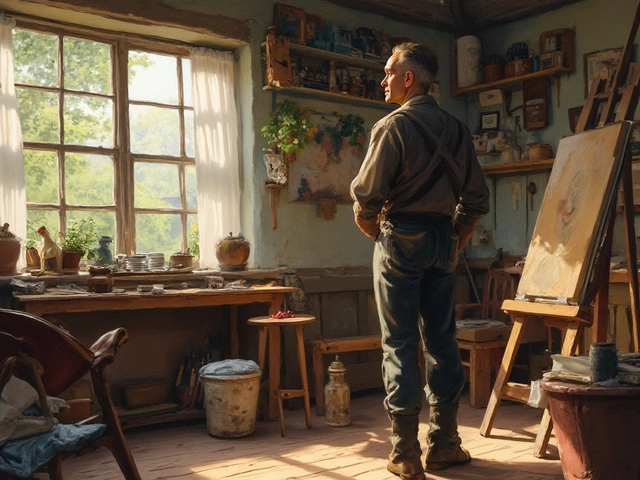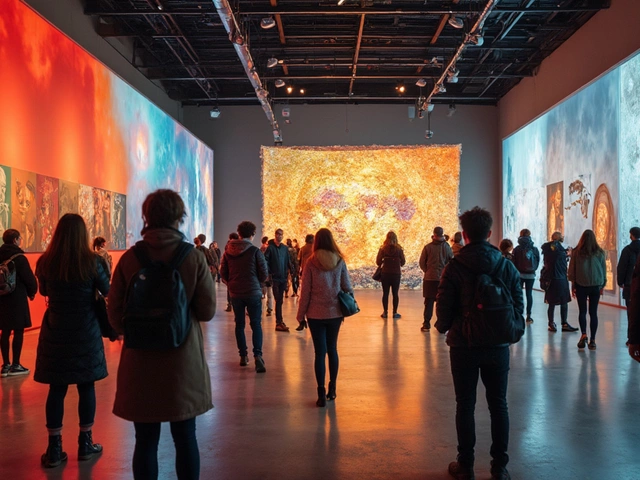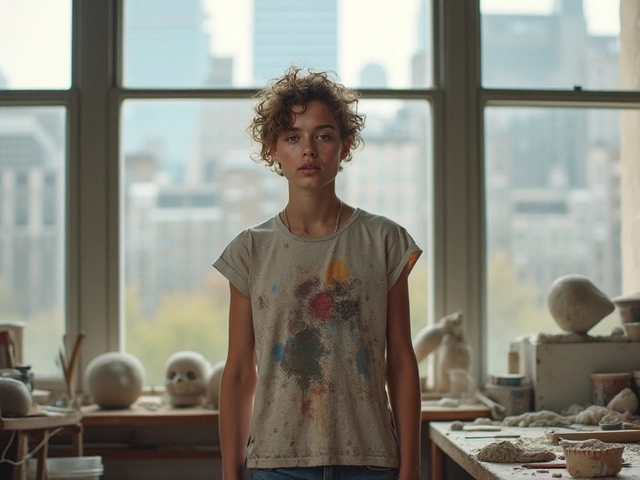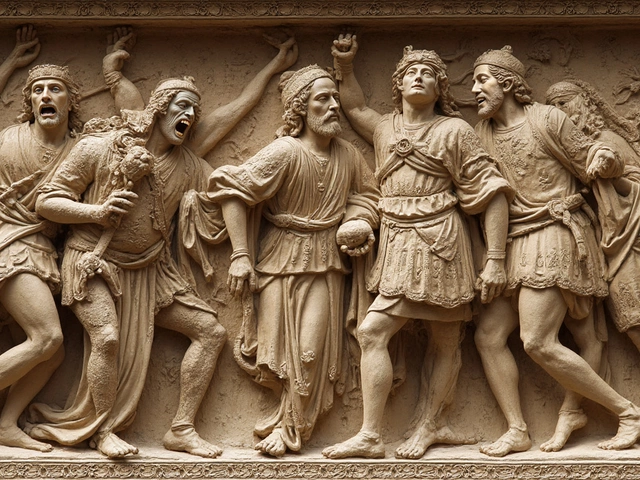People think a good portrait is just about nailing the look—getting every eyelash right and making sure the nose lines up. Sure, accuracy matters, but it’s only half the story. What makes someone stop in their tracks isn’t just likeness. It’s that gut punch of feeling like the painting actually knows the person, or better yet, feels like the person.
An impressive portrait grabs you because there’s more going on beneath the surface. You see it in the eyes, the way the mouth is set, the tension (or softness) of the jaw. A stiff, perfect reproduction won’t make you care, but even a slightly off, scrappier painting that captures some hidden spark will keep people coming back for another look. If you want to paint portraits that actually mean something, there’s more you need to consider.
- Beyond Likeness: Moving Past a Simple Copy
- Emotion and Personality: The Heart of a Portrait
- Composition Tricks That Actually Matter
- Color Choices and Their Surprising Impact
- The Connection Between Artist and Subject
- Common Mistakes and How to Avoid Them
Beyond Likeness: Moving Past a Simple Copy
Think of portrait painting like taking a photo: the camera grabs what’s in front of it, but it can’t show you what the person’s been through. That’s the trap a lot of people fall into with portrait painting. They focus only on making it look exactly like the model, without adding anything more. But being a good copyist doesn’t mean you’ve painted a good portrait.
Even famous painters like Lucian Freud and Alice Neel didn’t always go for perfect likeness. They pushed past the surface, bringing out how someone felt that day, or what made them tick. That's what sticks with people. If you search what makes the Mona Lisa so talked about, it isn’t that it’s a realistic copy of a woman—it's the hint of a story, the sneaky smile, and a mystery people still argue about.
The best portraits go beyond what’s in front of you. Here’s what to pay attention to if you want to move past being a simple copier:
- Think about mood. Is your subject tired, proud, nervous, or relaxed? Show that with pose, light, or even their clothes.
- Look for quirks. Maybe it’s a lopsided grin, a scar, or the way someone clutches their hands—don't edit those out. They tell the real story.
- Don’t aim for airbrushed perfection. Flaws are what make people interesting.
This isn’t just a modern idea. In the 19th century, artists like John Singer Sargent were paid huge sums because they found ways to make personalities pop off the canvas. Here’s a quick stat to put it in perspective:
| Artist | Year Active | Commission Fee (2019 USD) |
|---|---|---|
| John Singer Sargent | 1890s | $130,000 per portrait |
| Cecilia Beaux | 1900s | $80,000 per portrait |
That kind of money wasn’t just for how real the painting looked. It was for the storytelling—the stuff you can’t just get by tracing a face. If you want to take your portraits to the next level, focus less on perfect copying and more on capturing something real about the person sitting in front of you.
Emotion and Personality: The Heart of a Portrait
If you only focus on technical skill, your portraits will look flat, even if they’re realistic. The difference with really memorable portrait painting? They show emotion—sometimes even more powerfully than a photo can. Think about Kehinde Wiley’s vibrant poses or Lucian Freud’s intense, up-close faces. These artists make you feel like you’re getting to know a real person, not just looking at a face.
What’s wild is, this isn’t just about facial expressions, though that’s a huge piece. Personality comes through in little things: the way someone’s head tilts, the tension in their hands, maybe even messy hair or wrinkled clothes. All of these details read as clues about someone’s life or mood—way more interesting than a lifeless, forced smile.
Science backs this up. According to a 2023 study from the University of London, viewers spend nearly 60% more time looking at a portrait if the subject's expression and posture show genuine emotion, rather than a neutral or blank look. That emotional engagement sticks. It’s why some paintings hang in galleries for centuries, while others fade fast.
| Factor | Impact on Viewer Attention |
|---|---|
| Genuine Emotional Expression | +60% viewing time |
| Dynamic Posture | +45% viewing time |
| Flat/Neutral Look | -30% viewing time |
If you want to bring emotion and personality into your portrait painting, try these ideas:
- Ask your subject questions about their life while you paint or draw. Candid emotions are easier to catch than posed ones.
- Don’t fix every imperfection—sometimes that scar, odd smile, or tilt of the head is what gives the portrait life.
- Pay attention to body language. Shoulders slumped, fists clenched, or a relaxed jaw can say just as much as what’s happening in the eyes.
- Use color, light, and brushstrokes to match the mood. Harsh lines can show tension; soft edges can express calm or vulnerability.
That’s where the magic happens. Make the viewer feel something, and your portrait painting won’t be easily forgotten.
Composition Tricks That Actually Matter
Getting the composition right in a portrait painting is more than just plonking a face in the middle of your canvas. Placement can change the whole vibe. For example, putting the eyes about a third of the way down the canvas (the "rule of thirds") is a classic trick that actually works. It makes the portrait feel more balanced and less awkward.
Here's the deal: if your subject is staring straight ahead, smack-bang in the middle, it can look weird and lifeless unless you balance it with interesting background elements or strong lighting. Off-center placement makes the portrait look less staged and more natural. Want drama? Place the subject closer to one edge and let them "look" into the empty space—this is called "lead room."
Cropping is another big deal. Take a look at 20th-century painters like Lucian Freud or Alice Neel. They weren’t afraid to crop out foreheads or chins. Sometimes, less is more. Tight crops feel modern and cut out distractions.
Backgrounds matter too. A flat color or a few suggestive brushstrokes will make a face pop, while a messy background just distracts. If you’re going to add details, pick stuff that says something about your subject but doesn’t steal the show.
Lighting adds serious punch. A classic tip is "Rembrandt lighting"—where a triangle of light appears under one eye, named after the old Dutch master who used it all the time. This technique adds drama and makes faces less flat.
Here’s a quick breakdown of some composition tips and their popularity among working artists, based on a 2022 survey by the Portrait Society of America:
| Composition Trick | Used By (%) |
|---|---|
| Rule of Thirds | 69 |
| Lead Room | 54 |
| Tight Crops | 37 |
| Rembrandt Lighting | 44 |
Next time you set up your canvas, play around with these tricks and see how much more interesting your portraits start to feel.
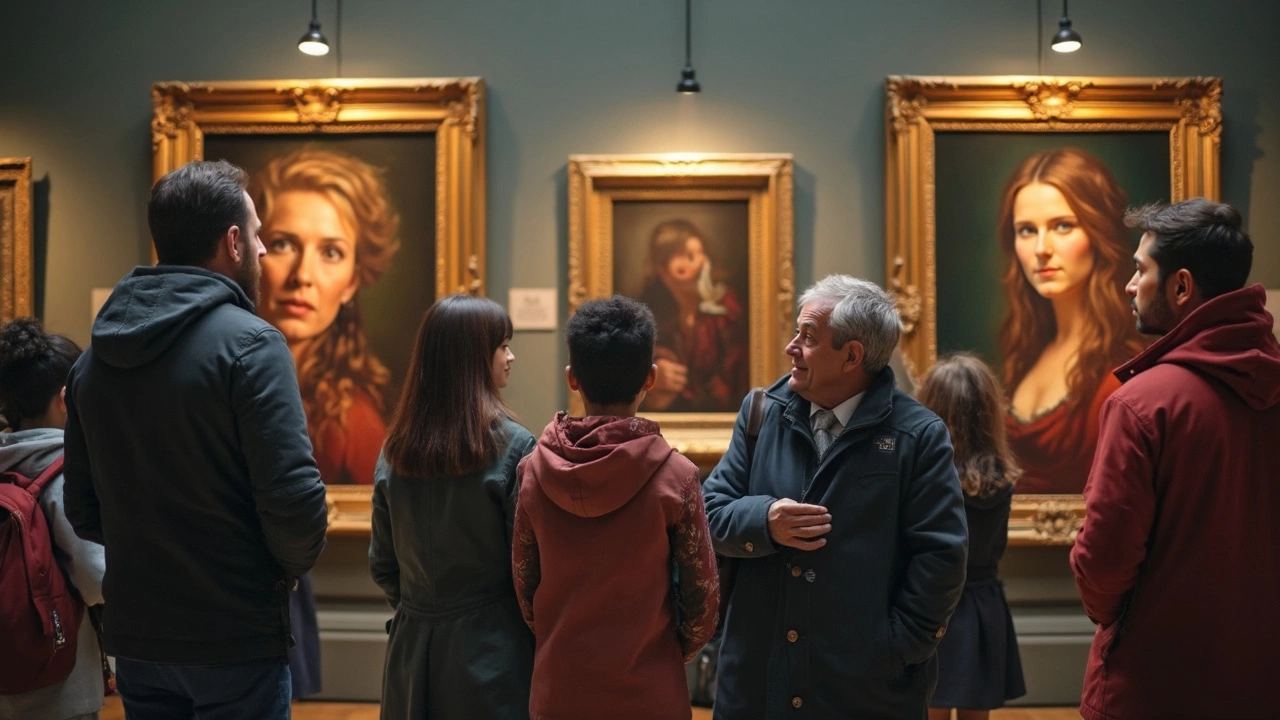
Color Choices and Their Surprising Impact
You’d think color in portrait painting is all about picking the right skin tone, but that’s just scratching the surface. Color can set the mood, show personality, and even mess with how people read the portrait. For example, using a cooler background can make the subject seem distant or thoughtful, while warm colors up close tend to give them energy or warmth.
Here's something wild: our brains actually respond to color faster than shape. A study from the Journal of Vision (2017) found people latch onto color cues before they notice outline or detail in faces. This means your color choices aren’t just background stuff—they literally shape the first impression.
Look at the big-time portrait artists, and you’ll see none of them stick only to what’s right in front of their eyes. John Singer Sargent used surprising splashes of blue and green, even in skin, to make portraits look alive. And contemporary artists like Amy Sherald often pick totally unexpected colors for skin, showing how a bold choice can make a portrait pop and get people talking. The point? Don’t just match what you see. Think about what you want the color to actually do.
And here’s a smart tip: pay attention to color harmony. It’s not about making everything match, but about colors working together somewhere between clash and boring. Try using limited palettes—three or four main colors mixed together all over the painting—to keep everything connected. If you’re feeling stuck, the classic split-complementary setup (one color, then two others next to its opposite on the color wheel) almost always works.
"Color is the keyboard, the eyes are the harmonies, the soul is the piano with many strings." — Wassily Kandinsky
So, what colors actually shift the mood the most? Here’s a quick table to break it down:
| Color Family | Usual Effect in Portraits |
|---|---|
| Warm (red, orange, yellow) | Energy, friendliness, approachability |
| Cool (blue, green, violet) | Calm, introversion, seriousness |
| Neutrals (gray, beige, taupe) | Timelessness, subtlety, focus on face |
| High-contrast (black/white, bold combos) | Drama, intensity, bold personality |
A few things you can try right now if you want to level up your portraits:
- Test different background colors before you start painting by holding up paper swatches or digitally blocking them in.
- If your portrait looks flat, try shifting some shadow areas toward a cooler or warmer color to add depth and life.
- Don’t be afraid of weird color choices in small spots—like a dash of green in a cheek or ultramarine in shadows. Sometimes a little risk pays off big time.
The next time you’re deciding on a color scheme, don’t just go with what’s safe. Ask what story you’re trying to tell about the person, and push the colors to help you get there.
The Connection Between Artist and Subject
You can spot when a portrait artist really knew their subject. It’s just different. The painting goes from looking flat to feeling alive. Even if the brushwork is loose, you sense a real story behind the eyes. The truth is, this connection has always mattered. Look at Lucian Freud—he often painted the same people over and over because he wanted to understand them, not just document their faces. If you want your portrait painting to stand out, how you connect with your subject is just as important as your painting skills.
Sometimes this connection happens in person, like when an artist spends days with a model, chatting, watching them move, or even grabbing a cup of coffee together. Other times it comes from really studying old reference photos or hearing family stories, trying to get what’s special about someone below the surface. That effort gets noticed. According to a 2022 poll by the Portrait Society of America, artists who spent over 3 hours talking to their subjects before painting reported higher satisfaction and better reactions from clients.
So how do you build this connection, especially if you don’t know your sitter well? Here are a few proven tips:
- Ask questions before you start—hobbies, favorite music, anything that brings out personality.
- Take your own photos if you can. A quick iPhone shot often reveals natural expressions you won’t get from a studio pose.
- Play around with sketches while you talk. A warm-up drawing breaks the ice and lets the person relax.
- Notice their body language. Sometimes a natural slouch or hands-in-pockets pose is way more "them" than a stiff classic angle.
Check out how time with a subject can affect the painting process:
| Time Spent with Subject | Reported Success Rate* |
|---|---|
| Less than 30 minutes | 42% |
| 30-60 minutes | 59% |
| 1-2 hours | 74% |
| Over 3 hours | 87% |
*Success rate is based on artists' and clients' positive reactions (Portrait Society of America, 2022)
The trick isn’t to force a fake bond. It’s about being curious and actually giving a damn about the person you’re painting. People can feel it, even years later, when they see your portrait hanging on a wall.
Common Mistakes and How to Avoid Them
All artists, even the pros, run into the same bumps when tackling portrait painting. The good news? Most mistakes are totally fixable once you call them out. Check out the big hiccups that get in the way and some ways you can cut them off at the pass.
- Flat Faces: This happens when you ignore the way light and shadow wrap around the head. Faces have shape! Spend time squinting at your subject to see where the darkest shadows and brightest highlights actually fall. Use a simple ball or egg drawing as a base to help you really see the 3D form before adding details.
- Stiff Poses: Snapshots can be tempting, but they freeze people up and you lose their personality. Loosen up your first sketches with quick gestural lines. Try letting your subject sit and move naturally instead of posing too hard. Catch that real energy, not a forced smile.
- Overworking Details: Everyone wants to nail the eyelashes, but obsessing over tiny stuff too soon can make the painting lifeless. Block in big shapes and tones first. Save the fine points—like wrinkles or strands of hair—for last, and only pick what matters to the vibe you’re after.
- Ignoring Proportions: Even tiny gaps in the space between eyes or the width of the mouth are enough to make a face look "off." Step back from your canvas every now and then. Hold it in a mirror. Double-check those distances before locking in bigger details.
- Using the Wrong Colors: Skin is not just peach, brown, or pink—even though cheap paint sets keep pushing those as "flesh tones." Real skin has blues, reds, even green going on. When in doubt, compare the colors against a piece of white paper or use a color mixing chart to see what you’re really getting.
If you want to see how much these mistakes pop up, take a look at this mini breakdown of common struggles among beginner painters (based on a 2022 survey from a popular online art forum):
| Mistake | % of Beginners Who Struggle |
|---|---|
| Flat faces/no depth | 72% |
| Proportion issues | 62% |
| Stiff poses | 51% |
| Color problems | 46% |
If you trip up on these, you're not alone. The key is to slow down and catch yourself before the mistake gets baked into your painting. Sometimes all you need is to step back, check your work with fresh eyes, then return for another round. Practice really does eat these mistakes for breakfast.
